Naturally, you want to protect your children on the road. You're either parents or future parents, after all.
So it's not too early to start thinking of a proper car seat for your child, especially if you're a parent-to-be.
But, you cannot just pick whatever car seat you like, and place your little one inside, hoping you've found the right one.
In addition, it might be challenging since you have thousands of car seats on the market.
I suggest you examine the guide & find the right car seat stages for your child's safety and correct use.
So, let's sort the details out.
More...
Table of Contents
- Car Seat Stages at a Glance
- Car Seat Stages and Ages: The Safest & All-detailed Guide for All Parents!
- Stage 1: Car Seats for Infants & Toddlers (Birth - 12 Months; 1-3 Years)
- Stage 2: Preschoolers & Toddlers (1-3 Years; 4-7 Years)
- Stage 3: School-aged Children (4-7 Years; 8-12 Years)
- Stage 4: Older Kiddos (8-12 Years)
- What About the Installation Process?
- Airbag Systems
- What About Car Accidents?
- What Should the Right Car Seat Be Like?
- How to Purchase a Proper Car Seat?
- FAQs
- Final Words
Car Seat Stages at a Glance
Age Group | Type of Seat | General Safety Standards |
|---|---|---|
Infants and Toddlers | - Rear-facing only car seats. | All newborns, infants, and toddlers must remain in the rear-facing position until they overgrow the maximum height and weight limit recommended by the car safety seat manufacturer. But, convertible car seats allow your kids to ride rear-facing for two or even more years. |
Toddlers and Preschoolers | - Forward-facing convertible car seat. | All kids who have outgrown the maximum weight and height limits issued by the manufacturer must use the next level – forward-facing car seats with harness systems. They should remain inside until they reach the highest limits the manufacturer determined. Many car seats properly accommodate children up to 65 pounds or even more for as long as possible. |
School-aged Children | - Booster seat (numerous types). | Once the child outgrows the upper limits in their forward-facing seats, they can switch to belt-positioning booster seats, backless boosters, or harness boosters. The seat belt also must fit them properly. They should remain in the back seat, properly restrained in booster seats, until they're 4 feet 9 inches tall and between 8 and 12 years of age. And, they must sit in the back seat until they're 13. |
Older Children | - Vehicle seat belts | Once children are 13, they can use the adult seat belt system, with shoulder and lap belts covering them correctly. Once they're 13, they can also sit in the front passenger seat. |
Car Seat Stages and Ages: The Safest & All-detailed Guide for All Parents!
You cannot keep your little one safe in the car seat unless it completely fits them.
Of course, you will be more worried if you're a brand-new parent, as you need to know the rulers and safety standards regarding all car seats, their benefits, and the appropriate options.
But, if you follow the AAP and NHTSA's safety standards and manufacturer's instructions, you cannot be wrong.
Of course, you can always find a Child Passenger Safety Technician to help you and guide you adequately through the searching and later installation process.
However, the rules might vary from state to state, so that you can find numerous car safety laws and regulations concerning children's safety here.
And below, you can find everything you need to know (generally accepted rules) regarding child passenger safety seats, the stages of car seat, and how to install & use them properly.
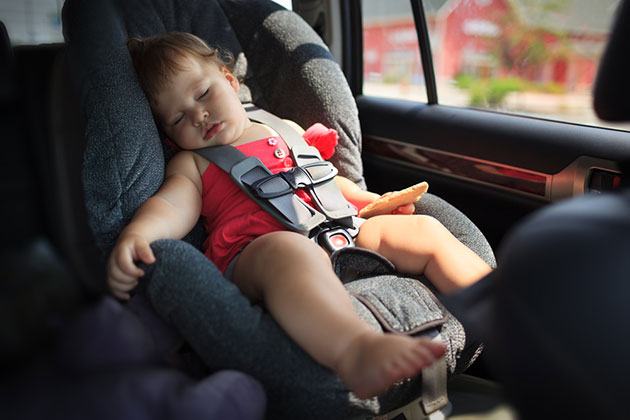
Stage 1: Car Seats for Infants & Toddlers (Birth - 12 Months; 1-3 Years)
According to AAP & NHTSA, all newborns, infants, and toddlers must ride in the rear-facing car seats as soon as they get out of the hospital and go home.
In addition, all infants should stay in rear-facing car seats as long as possible to add more to their safety, stability, and security while in the car.
Thus, you can find a rear-facing convertible car seat that prolongs the child rear-facing car seat use for two more years since the convertible seat better supports the child's body.
Also, the safety law states the child should remain rear-facing longer in the back seat of your vehicle, in the center position, if possible.
Main child rear-facing seat types:
1. Rear-facing only seats
This car seat used for infants between 22 and 35 pounds, between 26 and 35 of height and weight limits.
This infant car seat is compact and often has a carrying handle.
It would be best to use it only for children's travel, and the rear-facing car seat comes with a car seat base.
So, the installation is pretty simple.
2. Rear-facing convertible car seat
Once the child overpasses maximum height and weight limits in the rear-facing seat, you should place them in the next level - a forward-facing car seat.
But, your child should remain in the rear-facing position as long as possible.
So, you can use different convertible seats - working as both rear-facing car seats and forward-facing car seats for more stability.
Convertible seats don't have bases or carrying handles and are intended to remain in cars.
Many convertible car seats increase the weight limit (40-50 pounds), so they're perfect for toddlers and even bigger babies.
You can use them for a child's travel, and they have a 5-point harness for the child's hips, child's shoulder, and legs.
3. All-in-one car seats
You can use them as a rear-facing seat, forward-facing car seat, or belt-positioning booster seats.
These infant car seats are ideal for toddlers and bigger infants, and they increase the upper weight limit (40-50 pounds) when your child grows.
The rear-facing seats keep the child's head in a better posture, adding more support & stability for their torso.
That's why children should ride in the rear-facing seats for an extended period.
Also, do not put your baby in forward-facing mode if they're not ready yet. Check the regulations when it's the best time to do so.
Stage 2: Preschoolers & Toddlers (1-3 Years; 4-7 Years)
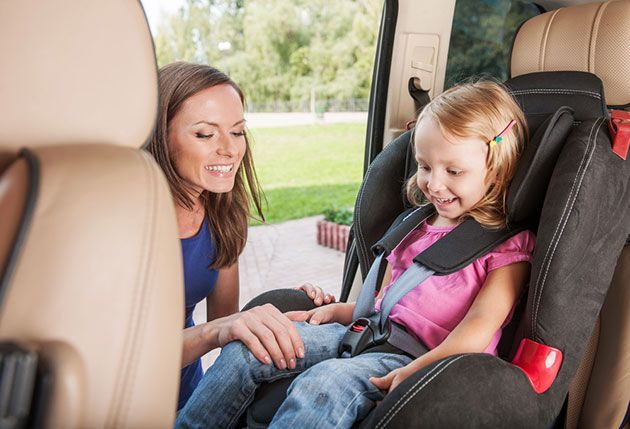
Once your child outgrows the rear-facing car seats, it's time for the second stage - forward-facing car seats.
The forward-facing models should be installed in the back seat of your car.
You will find four forward-facing car seat types:
1. Convertible car seat
With the transition from the rear-facing to a forward-facing seat. The car seat also includes all-in-one seats.
2. Combination seats with harnesses
Depending on the models, you can use them as forward-facing seats for kids between 40 and 65 pounds or booster seats for kids between 100 and 120 pounds.
3. Built-in forward-facing seats
To use them properly, you must read the vehicle owner's manual, and their weight and height limits may vary.
So, please read the manual on how to use them correctly.
But, do not use these forward-facing seats unless your baby outgrew the upper height and weight limits of the infant car seats.
4. Travel vests
Suitable for all 22-168 pounds children, working as an alternative for a forward-facing seat.
The option is perfect when a particular vehicle has a lap-only belt in the rear-facing position, for kids whose weight limits outgrew the recommended and children with special needs.
Stage 3: School-aged Children (4-7 Years; 8-12 Years)
School-aged children are considered bigger kids.
So, if they outgrew their forward-facing seat with height and weight limits, they're ready for booster seats.
However, you need to know the following:
- All kids using boosters must remain in belt-positioning models until the seat belt fits them correctly; that is when they're four feet nine inches tall.
Also, they must be between 8 and 12 years old.
- Many children will not fit the seat belt system appropriately if they're not 10 or 12. So, they must remain in booster seats.
- Instructions manual will show you when the children are ready for safety seats, according to the child's age, weight & height limits.
- They can use boosters when the top of their ears reach the top of the seat
- Their shoulders are above the top harness openings
- They reach the upper limits for harness seats
The main booster seat types are:
1. Belt-positioning booster seat
It has lap and shoulder belts, the same way the adult uses the vehicle's seat belt.
Also, they're created to follow the child's age and increase your child's safety, as both lap and shoulder straps cover the most vital body parts when your child sits.
2. The backless booster car seat
It works the same way as the previous booster seat with lap and shoulder belts, ensuring maximum safety and stability for kids.
3. Harness booster seats
Although the last two types of booster seats are more famous, this one belongs to all-in-one seats.
So, these safety seats have 5-point harness straps covering the child's shoulders, child's hips, chest, legs, and other more substantial body parts.
They also contain a chest buckle for proper tightness and more stability for your little ones when in all modes - infant car seats, forward-facing, or booster seats.
The harness straps also adjust as your child grows, following their height and weight, keeping them safe and sound on the road.
Often you can come across similarities between the highback and backless boosters.
Both will reduce the risk of injuries in accidents and ensure the seat belts fit your kids adequately.
But, highback boosters better provide vehicles with lower seatbacks or without headrests. And, numerous seats only resemble highback boosters but are combined seats.
In addition, they have harness systems that you can remove when you have older children.
On the other hand, backless boosters are often less expensive and effortless to move around more vehicles.
In addition, they can easily be used in cars with higher seat backs and headrests.
Stage 4: Older Kiddos (8-12 Years)
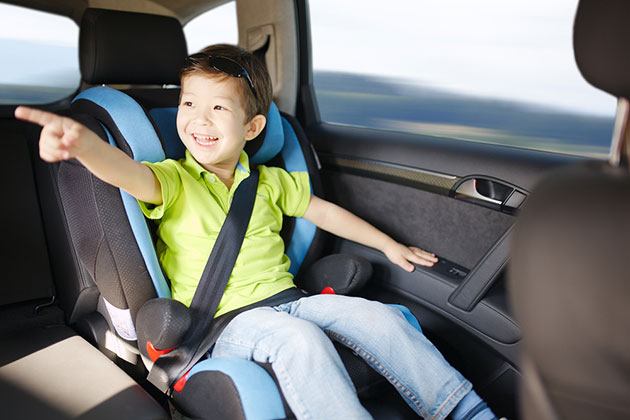
Finally, once your child outgrows their boosters, they can use adult seat belts.
When your little ones are ready in height and weight to use the vehicle seat belt on their own, they must use both the shoulder and lap belt for maximum protection and stability.
However, you must ensure the seat belt fits properly. How?
Well:
- The lap belt must cover their upper thighs, never their stomachs.
- The shoulder belt must cover their shoulder and chest, never their necks and throats. If it fits them correctly, they can freely use the vehicle seat belts.
- Your child is tall and strong enough to sit in the back seat of your vehicle with the knees bent over the seat's edges without slouching. If they can sit comfortably during travel, they can use the seat belt systems.
Extra Tips for More Safety
- Never let your children share their seat belt with others. All passengers have their own seat belt system.
- Always wear a seat belt as an example for your little passengers
- Ensure the kid doesn't tuck the shoulder belt behind the back or under the arm.
This way, the child makes an extra slot between the seat belt straps and reduces protection in car crashes to a minimum.
But, according to the Child Passenger Safety Law, children must remain in the back seat of your vehicle until they're 13 years old.
Only they're 13, they can sit next to you in the front seat.
Again, they must use the seat belts, with the proper fit of the shoulder belt for the child's shoulders and lap belt for their upper thighs.
What About the Installation Process?
If you pick the right car seat, you need to install it correctly.
The safest place for the installation is the center position in the back seat.
All car seats must be placed in the back seat, regardless of their types and stages.
But, if you have the same seats for two or more kids, or twins, for instance, you can place one in the center and another behind the passenger seat.
Also, when you have rear-facing infant seats and forward-facing seats, you will place the forward-facing one in the center and the infant car seat behind the passenger.
This is because the rear-facing infant car seat had more side-impact and overall protection than the forward-facing one lacked.
Ask your CPSTs for more guidelines and a better installation process.
Of course, you can install your seats with either a LATCH system or regular seat belt systems.
The LATCH installation is effortless and more straightforward, but it doesn't necessarily mean that it offers more safety than regular seat belts.
And, for LATCH, you will find the tether and lower anchors for an effortless setup process. All you have to do is to attach the tether to the top anchor.
In addition, you have to fasten the lower anchors to their connectors, and the installation will be done in minutes, safe and stable.
For seat belt setup, you can lock it by pulling it all the way out and then letting it retract for tightness, stability, and more security.
But, numerous cars have built-in lock-offs, and you don't have to struggle at all.
And, you can always use your vehicle owner's manual for more info.
PRO TIP: Do you need help with car seat installation?
If you cannot properly install your car seat, you can always contact a safety technician to help you & guide you through this process.
So, you can find a verified expert on the following websites:
1. NHTSA Parents & Caregivers or
2. National Child Passenger Safety Certification (877-366-8154.) You can search for all technicians for specific needs, and they will answer your dilemmas and questions.
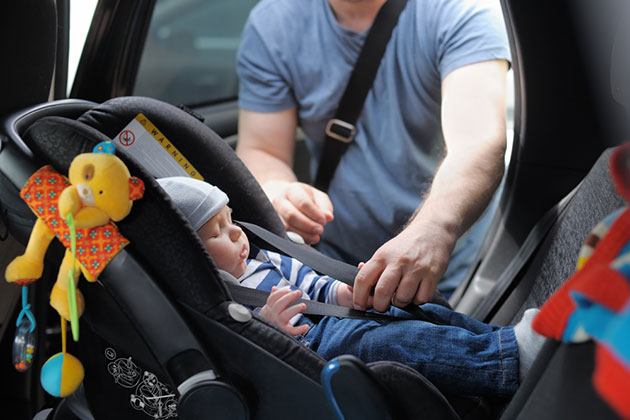
Airbag Systems
It's crucial to remember that you must not place your car seat in the front seat, especially with the active airbag system.
This is particularly important for rear-facing children.
In case of accidents, the pressure and forces will activate it, so the impacts will literally smash your kids.
As a result, they will suffer from severe injuries and face fatal consequences. So, turn them OFF, and keep rear-facing kids in the back.
But, the front airbags are installed in all newer vehicles. So, they will work well to protect older passengers, adults, and teenagers.
Thus, if you have a car with no back seat, it's not safe at all to use it for travel with your little ones.
But, again, look for the vehicle's manual for more info. Additionally, vehicles nowadays also have side airbags for side-crashes.
So, you should once again check the possibilities and regulate your truck to keep your kids safe.
PRO TIP: Should you or shouldn't you use car seats & aircraft?
According to the FAA rules and regulations, all kids weighing less than 40 pounds must be adequately restrained in safety seats when flying.
These include numerous rear-facing, forward-facing, and convertible seats, but not vests and boosters.
The boosters are approved only in the harness types; otherwise, you cannot use them.
However, some airlines might not even accept regular car seats for air travel, so you should check with the airlines and find their regulations.
Or find more information on the FAA official website.
What About Car Accidents?
If you had a car crash, make sure you replace the car seat immediately!
The frames and bases may not fully break, and there might be or not be some cracks or scratches on the surface, but you never know what happens to the inner parts & inner construction.
Therefore, you must replace your car seat instantly and use another one.
What Should the Right Car Seat Be Like?
Well, you must never use a car seat that:
- Has visible harms, cracks, scratches, and other damages on the surface.
- Is too old. Check the safety labels, and see the expiration date.
- Lacks the labels with the model number and expiration date.
- Lacks safety instructions. It would be best if you had them for correct use. So, you need to contact the manufacturer.
- Was in a car accident!!!
- Misses specific parts. Second-hand seats will always cut some parts, so examine them and contact your manufacturer for better guidelines.
- Was recalled. Contact your manufacturer or NHTSA to find out.
And, for more information, you need to consult with the manufacturer or safety technicians.
How to Purchase a Proper Car Seat?
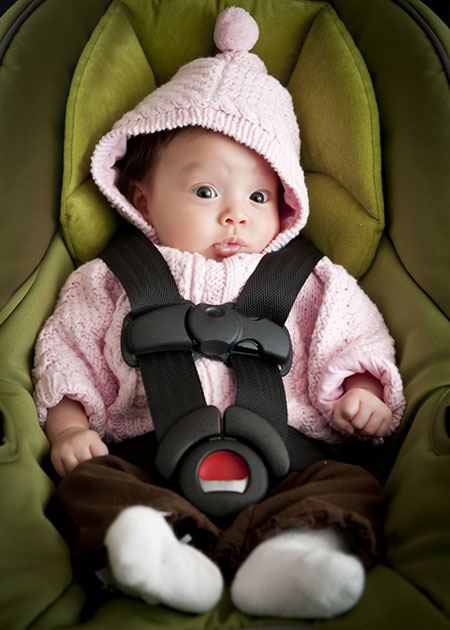
There is the following procedure:
1) The best car seat should fit your child's head, torso, and other body parts. It should include their weight and height and offer a proper, safe installation.
2) Forget about the price - don't decide on this factor. Higher prices do not guarantee the best quality and performance, so stick to safety standards first.
3) Avoid all second-hand seats, especially if you don't know their history and weaker points.
FAQs
1. What are the ages and stages of car seats?
In short, the primary ages & stages are the following:
- rear-facing seats (birth-twelve months & 1-3 years)
- forward-facing car seats (1-3 years & 4-7 years)
- booster seats (4-7 years & 8-12 years)
- seat belt systems (8-12 years)
All children must remain in the lover car seat levels until the maximum limits regarding height and weight are recommended by the manufacturer and safety authorities.
2. At what age do you change car seats?
Well, you can change them sooner or later.
If your child grows and develops too fast, you can quickly switch your seat with the next generation.
However, if your child is not ready for the next seat level, you must not hurry.
Please keep them in the correct car seat as long as possible. This way, you will increase their stability, safety, and security while on the road.
Of course, if you had a car crash, you must replace the car seat immediately!
It might contain invisible damage, so you must obey the rules and use a new one.
3. Can I put my nine-month-old in a forward-facing car seat?
No, you cannot.
According to the AAP & NHTSA, all children between 1-3 years old and less must remain in the rear-facing seats.
Numerous brands increased safety systems by increasing maximum and minimum weight limits, so kids need to remain rear-facing longer.
4. What type of car seat should a 4-year-old be in?
Your 4-year-old child should be appropriately restrained in the forward-facing car seat as long as possible.
The seat will provide more support and better body posture, keeping them more stable and safer inside the seat.
But, if they outgrew the upper limits recommended by the manufacturer, you can place them in the belt-positioning or harness boosters.
Do not place them in the backless models since they might not be ready.
5. At what age can a child use a backless booster car seat?
According to the NHTSA and AAP, your kids should be at least 4 feet nine inches tall for a booster seat.
Regarding ages, they should be between 8 and 12 years old.
Please, do not place them in the backless booster seat if they're younger and cannot properly use the seat belt system.
The shoulder and lap straps should cover their shoulders, chest, and upper thighs instead of beck, throats, and stomachs.
So, if they're not ready yet, do not place them in the backless boosters.
Final Words
Have you learned all safety standards regarding car seats, appropriate ages, and stages?
Then, you can easily select the best car seat for your child if you have one.
Keep in mind that your kids must be ready for the specific car seat types, and you should keep them in the correct unit as long as possible.
Otherwise, you will compromise with their safety, which might result in fatal outcomes. And you certainly don't want that.
Bear in mind that safety technicians are always at your disposal, so don't hesitate to ask if you have specific questions and dilemmas.
And, always keep your kids safe!
